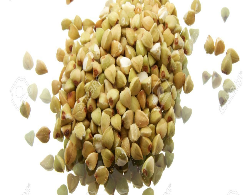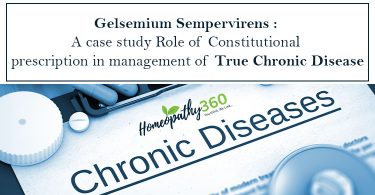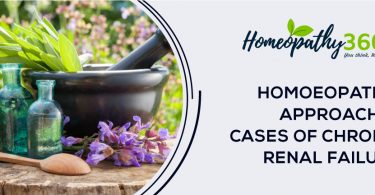(A paper read to the XXIX International Congress of Homoeopathic Medicine at Washington in June 1974)
I have been away from these meetings for 15 to 20 years at least and it feels
like coming into a new world again. Let me also say that I am going to confront you with an approach to the remedy that is entirely different from any you have been hearing this morning. It comes not from the physiological angle but from that of depth psychology; I might almost say, from a spiritual angle.
To begin, I would like to say, that in thinking in holistic terms, Hahnemann
was ahead of his own as well as our time with his anticipation of an overall
pattern which encompasses not only substance but also what we now call
energy. This was his most revolutionary discovery, a oneness that underlies
illness and cure as one and the same. Both have begun to be repostulated in our time by modern physics, biology and depth psychology.
We no longer hold what is called the billiard-ball theory of matter, namely,
the pushing around of inert particles of matter by what is called energy. We
now acknowledge that matter and energy are actually one, neither having an
independent reality, but dependent on each other as transitory manifestations of what is called processes of “form”, nothing but form. Form is the underlying unit of existence. This is not form of something, but form per se, prior to any “thing”; form creating that which we call matter. This sounds like an abstruse notion, yet I would remind you that we change all the atoms and molecules of our body within approximately seven years, and still the person seems the same. How do we recognize this sameness? By virtue of the determining form principle, the elements of form that create or precede our material existence.
Similarly, biology thinks in terms of what Portmann has called “themes”;
themes expressing themselves in the creation of forms. This idea overrides the Darwinistic idea of chance selection by survival value. Portmann describes for instance the descent of the testicles as having no survival value. They are more exposed to danger than before and certainly do not serve survival. Like- wise many animal forms, such as the shape of a horn or thickened skin folds of a bull, in no way serve as life-preserving or biological functions, but rather express creative plays of existence. Nature is an artist creating and shaping forms to its own ends. As Goethe said: “The phenomena are their own explanation.” They need no further explanation.
Similarly in depth psychology, particularly in terms of Jung’s concepts,
complex and archetype are seen as form elements, as both the origin and the healer of a disorder, depending upon whether these autonomous principles can be integrated into an overall wholeness in life and living or whether they operate independently as disturbing factors.
All of these concepts add up to the idea of form or Gestalt, elements that are
more than the sum of their parts, the parts being integrated in an overall
pattern by the law of the form. This is the angle that Hahnemann intuited in
creating what he called the Arzneimittelbilder, namely the pictures or images
of remedies as though they were personalities, Miss Pulsatilla, Mr. Sulphur or Mrs. Sepia.
We may say that in the realm of creative forms they do exist. This is what
is meant with the genius of the remedy, namely an underlying core of meaning, a form-significance that shaped something that we treat as if it were an image, a person, or a part of a personality.
What I want to bring to your attention is that this is not a playful fantasy
but a working hypothesis tested in clinical use by depth psychology. Our psychic system actually perceives and operates in terms of such form patterns. The form elements are world-creating forces, entities, the power of God, or whatever you want to call them.
Our drug pictures then constitute what in German are called Sinnbilder.
Translated, Sinnbild means image of meaning, or symbol. Through the symbol we grasp the way the forces of cosmic and biological energy operate meaningfully. The symbolic model is now used in nuclear physics, in depth psychology and to a certain extent in modern biology but has not as yet, by and large, reached the science of medicine. It is unconsciously inherent in Hahnemann’s approach. I now propose to use the symbolic approach for the sake of understanding more fully the dynamic force of the serpent, the snake remedies, the foremost of which is Lachesis.
Let me diverge for a moment and say that a good deal of clinical pathology
can be understood in terms of body symbolism. It is for instance true that
when you analyse the psychosomatic background of cardiac disorder, you will nearly always find very central problems of feeling that have been repressed. This is in keeping with the old tradition, the old intuitive insight, of the heart symbolizing the functions of feeling. With gastric or duodenal ulcers, you might ask yourself the question, “What is eating this person, emotionally!” This is an organism that devours itself. The typical rheumatic state is somehow indicating a rigidifying tendency in the personality as well as the body.
Also when in psychiatry we aim at understanding the unconscious psyche
we proceed by relating its dynamics of dream and fantasy images to mytho-
logical and symbolic motives (themes) which are the language of the unconscious psyche. Mythological symbolism offers the most ancient as well as the most modern, and therefore timeless, comprehension of man’s relationship to the action of cosmic forces.
Now let us look at the image pattern, the Gestalt or form, the symbol of the
serpent as though it were a dream of nature in which a particular state of man, a particular potential state of pathology is represented. The serpent is one of our most ancient and most grandiose mythological motives. May I remind you that the staff of Aesculapius features the serpent wound around a central staff. The serpent is the image of primordial, autonomous, impersonal life energy underlying and creating existence and consciousness. It is the image of the instinctual life-will, of desirousness, hunger for life (Latin, libido), the urge to taste life, to learn and grow through testing life. In Eastern tradition it represents what is called Maya, namely the illusion of existence, and the manifestation of primordial energy, Prakriti. You are given a feeling about the consciousness-offering quality of the snake in the Old Testament, it is the urgeto taste from the tree of life and of knowledge. Hahnemann referred to it when he prefaced his Organon with “Aude sapere”-Dare to taste and understand. Sapere means both taste and understand. Hence the snake force involves us in life and living, not theoretically, but by deeply emptying the cup. It is a force which is wrapped around the tree of life and knowledge in the story of Paradise, leading to the fall from Paradise but also to life’s healing forces in staff of Aesculapius.
You also find the serpent on the cross, substituted for Christ in the Christian
Gnostic tradition. It is that which involves the fall of man and again leads him
out of it. The serpent is to be elevated, to be brought to a higher level. It is
the force which leads to life and into life and is being developed into consciousness, but, and here is the great paradox, in this development of consciousness life has turned against itself.
Therefore the image of the snake which eats its own tail, the uroboros, is the symbol of the infinity of life. In the development toward consciousness,
toward an ego, life of necessity turns against itself. Ego development rests
upon at least partial repression of instinctual urges. If we are not will+-g to live like animals, we must take a stand against our spontaneous emotional and instinctual drives; and this is the split within the life forces of the serpent
itself. It is a de-integration, a fragmentation, which rends the harmonious
wholeness. Where logos opposes bios, spirit standa against life and you encounter the pathology of the serpent. The serpent pathology is the unintegrated life impulse, the unintegrated libido, the unintegrated instinct split off and split in itself. It is the rebellion or paralysis of the life urge or libido; you can say Lachesis is the penalty of unlived life. Thus you have the egocentricity of Lachesis and on the other hand, the motif that appeared in the dream in Dr. Stubler’s paper, with the depth psychological symbolism quite evident. In a woman’s dream the motif of cutting up one’s own husband means cutting one’s own unconscious maleness. Cutting up the “totally other”, namely the unconscious side, amounts to the destruction of the unconscious libido. This is a dream which I would say is indeed typical of Lachesis in as much as the woman is severing herself psychologically from all the life impulses, but it need not refer only to Lachesis. (Let me say in parenthesis that the rubrick on dreamsin Kent ought to be taken with a grain, or several grains, of salt. They often fit, but owing to the lack of psychodynamic understanding and dream symbolism
one can easily be led astray.)
The main heading of serpent pathology is the repression and cutting off of
vital forces as a price to be paid for personal and personality development.
This covers all that which Hahnemann intuited under the heading of Psora,
the universal sickness of man. Consequently we have Kent’s remark that the
basic snake nature is that which we all have. In a way, I would consider the
snake venom a most violent anti-psoric medicine.
Now, I would say Lachesis is a particular, special version of this, as all
snakes have their own personalities and diversions of pathology. Lachesis
represents what I would call a jungle variety of this libido aspect. It is the
emotionally and sexually charged picture which reminds me somewhat of a
chronic Gelsemium with its sultry sensuousness. It is something like a thick
smell of repressed emotionality and sensuality which makes me think of
Lachesis.
Now, having this model in view, how does it establish a sense of order among the chaos of clinical and proving symptoms? How does it apply to the materia medica? Let us take the guiding symptoms one by one. First, the left-sidedness or left to right; here you have an extension, an invasion, as it were, of pathology from the left side. The left side is the sinistra side, the sinister side, because left has always been equated with unconscious function. It is the heart side, the relatively receptive, not to say passive side. Therefore it is the feeling and emotional side. You will find that the left side is always overburdened emotionally and programmed toward the unconscious; with all this we also think of Sepia and Phosphorus. These two are predominantly unconscious-determined, oversensitive, even clairvoyant medicines. Lachesis also has this, as well as Sepia, a heavily repressed emotional type. You have here the classical, typical invasion of repressed energy from the unconscious, emotional personality.
The next keynote is constrictiveness, constriction anywhere but particularly
of the throat. I find this quite frequently as a psychiatric syndrome when the
capacity to ascertain oneself as a personality is threatened. The globus hystericus for instance is a typical response for the throat when the ego has a difficult time holding its own against the invasion of emotional and especially sexual forces. The constrictiveness is a response to unseen yet powerfully experienced forces.
Next is the breakdown of the blood life and the autonomous nerve control.
You may remember that the Nazi slogan was “Blood and Soil”. With all its
viciousness in the political circumstances this was a profoundly moving
symbolic image psychologically. It would not have been so vicious, had it not
been so valid. Blood is indeed the deepest, most basic expression of life and
living. When life is repressed, it is cut off. The constriction of blood, of life
force, is a physiological constriction corresponding to the psychological image of cut-off emotion. Think of the anaemic young ladies of the Victorian age whose goodness did not allow them to live a red-blooded life.
Finally, the epitome of unlived life is to be found in the tendency for
carcinoma. To me cancer is number one on the list of psychosomatic disorders arising from unlived life which assumes concrete form as autonomous, unintegrated growth. It then exceeds the total organism and does not fit into the whole. In cancer pathology you will always find a sense of hopelessness, disappointment, bitterness, grimness, resentment against existence, whether events have precipitated these feelings or not. Even in the Rorschach pattern these personality traits have been confirmed, namely the constrictive, over-controlled personality that has come to a breakdown of controls. It is not merely the “repressed” personality, since everyone nowadays is found to be repressed in one way or another, but specifically the personality repressed with respect to the life-supporting qualities of aggression, emotion and sexuality. It is a repression of emotional intensity, of violent intensity underlying a controlled surface. Hence this personality is suspicious to the degree of paranoia, tense and depressed. I do not believe too much in jealousy as a leading or helpful symptom because, as in the case of repression, everyone has it. Rather the condition is similar to that of a snake lying quiescent, ready at the slightest provocation to strike, to bite. With a susceptability to hallucinatory and ecstatic states, the slightest cause triggers the crack-up that may lead to explosion.
From this standpoint, the intense aggressive urge is also more comprehensible.The Lachesis personality is very uptight and the underlying tendency to close off hides a vicious hate, meanness and even cruelty, the revenge for a life not lived. There is restraint, a seeming shyness overlaying a bitter tongue. We also find states that are the result of grief, fright, suppressed love, a danger encountered or a sorrow which could not be integrated into the overall feeling life of the personality. The flow of life is stopped, blocked on both the physical and the psychological level. Body fluids, menstrual or other, are blocked in their flow. So it is understandable that a keynote of Lachesis is improvement from the opening of discharges.
Lastly the climactic point, the last chance at the change of life for the juices
to flow. The change of life represents a critical point for the Lachesis sympto-
matology. In this last-chance situation, the life force and the emotions produce something akin to the eruption of a volcano.
There is’ also aggravation from sleep. In sleep all of our conscious controls
are relaxed. The same, by the way, applies to the effects of alcohol, also a
keynote of aggravation. The consciously controlled activities are relaxed and
the unconscious can take over, and it takes its compensating revenge. When we wake up, what do we find? We find ourselves overwhelmed by all the forces and impulses we cannot consciously accept and permit. We try to pull down the lid again, and conflict and aggravation ensue from the rebound toward repression.
Aggravation from touch. You know when you are pressed or hit, psycho-
logically, you bound back, but when the soft approach is used, you are “touched”. Your feeling overrules your defences and comes forth. This is what the Lachesis person’s repressed life, feelings and emotions cannot afford. Touch evokes feeling, evokes emotion, and thus evokes an aggravation of the repressed tendencies. On the other hand, hard pressure improves because we can respond by tightening and shaping up to the pressure. However, there is oversensitivity to anything constricting, because the constrictive tendency is a threat to vital functioning. This is a poignant example of how body function, taken symbolically, reflects the working of the archetype.
Finally we have aggravation in the autumn but foremost in the spring.
These seasons of transition, of budding love and life, lower the conscious
defences and are times of Lachesis aggravation. Conversely, motion, cold,
flesh air, wakeful activity, stimulate conscious control and close the lid effec-
tively on the intense unconscious upsurge.
Let us now consider the development of organ pathology, head, throat,
heart, ovary and veins, and blood decomposition.
The head is the centre of ego consciousness. When pathology is no longer
held in check, the superior, most controlled organ breaks down first. When a
revolt succeeds, it first topples the ruling chiefs. Take for instance migraine
headaches: migraine expressing the psychological state of forcing one’s head through a wall. The wall doesn’t suffer, but the head does.
The throat area we have already chracterized as the area of conflict between continued control of the sense of identity on the one hand and the onrush of unconscious emotions on the other.
The heart is the centre and the seat for validating life qualities and life
feelings.
The ovaries and sexual organs evidently are the centre of repressed libido,
sexual and biological urges.
The veins are the channels where the life flow becomes relatively turgid.
Remember again the image of the sultry jungle world of Lachesis. As the life
flow slows, stagnation sets in, in waters already stilled. Whatever the organ,
whenever the lower half of the body is reached by the repressive effects, the
vital functions are most centrally threatened.
I have attempted to give you a sense of the personality traits of Lachesis,
the Gestalt underlying isolated keynote symptoms, that you may recognize, in the pathological state of Lachesis, this picture of a repressed, intense life urge pushing back.
Let me close with the remark made by Fritsche, “that whoever attempts to
speak plausibly of Homoeopathy, regresses to the time of the powdered wig”, to the Zopfzeit.
I hope I have talked plausibly, but not rationally in the sense of our medical
confreres’ particularistic tradition. I believe that a readiness to perceive
those holistic, psychosomatic, indeed personality patterns, such as is now,
.albeit slowly, making its advent into some branches of modern psychology,
may be able to bring us a step nearer to the profound mystery of Homoeopathy. The contradictions in Homoeopathy may eventually open a way toward comprehension of it.
Yet this mystery is the mystery of life and of its paradox of the hidden unity
of suffering and healing, the mystery of the snake, and the mystery of how
Homoeopathy heals.
Author: EDWARD C. WHITMONT, M.D.
Source: The British Homoeopathic Journal, January 1975





